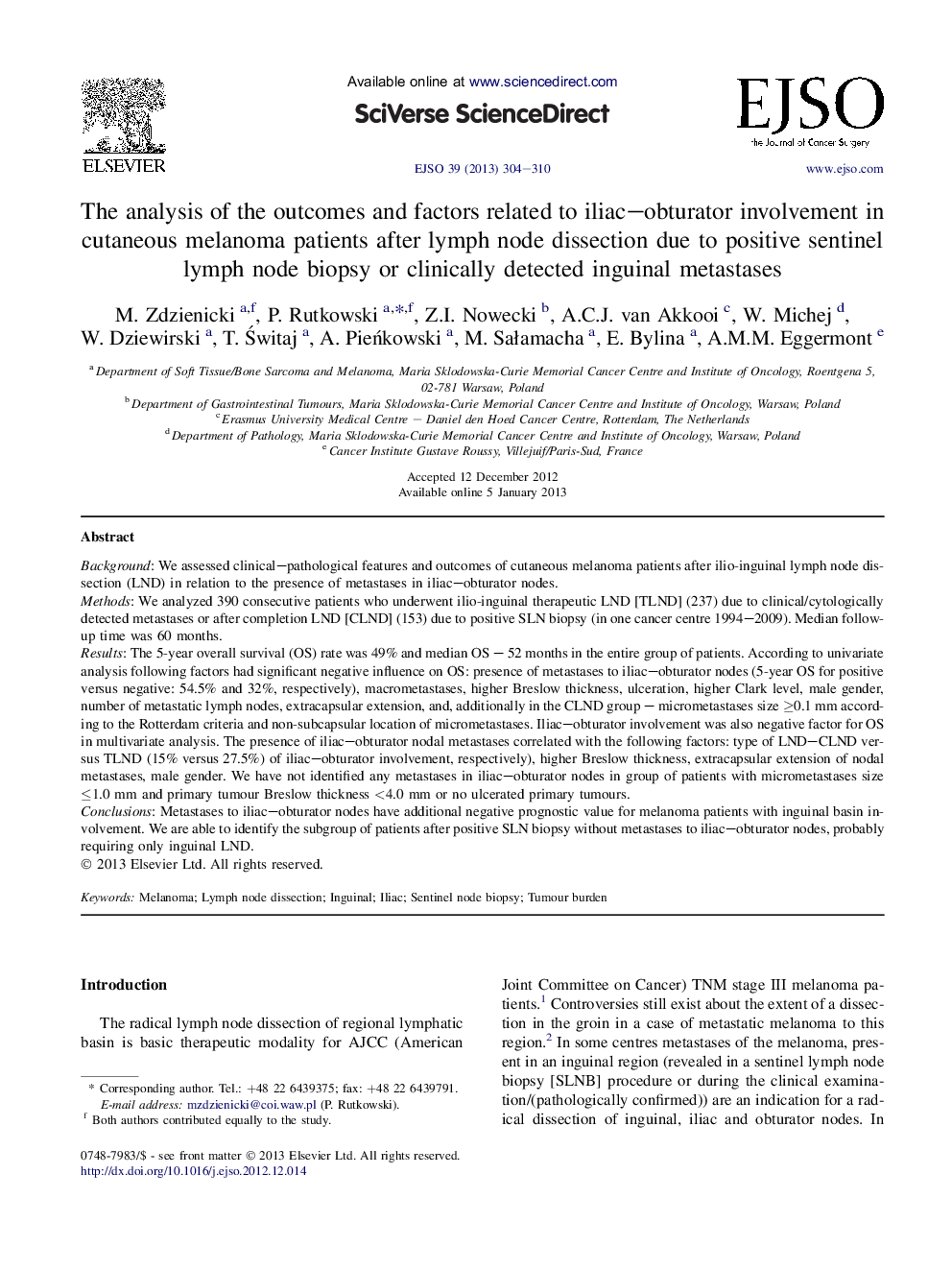| Article ID | Journal | Published Year | Pages | File Type |
|---|---|---|---|---|
| 3985649 | European Journal of Surgical Oncology (EJSO) | 2013 | 7 Pages |
BackgroundWe assessed clinical–pathological features and outcomes of cutaneous melanoma patients after ilio-inguinal lymph node dissection (LND) in relation to the presence of metastases in iliac–obturator nodes.MethodsWe analyzed 390 consecutive patients who underwent ilio-inguinal therapeutic LND [TLND] (237) due to clinical/cytologically detected metastases or after completion LND [CLND] (153) due to positive SLN biopsy (in one cancer centre 1994–2009). Median follow-up time was 60 months.ResultsThe 5-year overall survival (OS) rate was 49% and median OS – 52 months in the entire group of patients. According to univariate analysis following factors had significant negative influence on OS: presence of metastases to iliac–obturator nodes (5-year OS for positive versus negative: 54.5% and 32%, respectively), macrometastases, higher Breslow thickness, ulceration, higher Clark level, male gender, number of metastatic lymph nodes, extracapsular extension, and, additionally in the CLND group – micrometastases size ≥0.1 mm according to the Rotterdam criteria and non-subcapsular location of micrometastases. Iliac–obturator involvement was also negative factor for OS in multivariate analysis. The presence of iliac–obturator nodal metastases correlated with the following factors: type of LND–CLND versus TLND (15% versus 27.5%) of iliac–obturator involvement, respectively), higher Breslow thickness, extracapsular extension of nodal metastases, male gender. We have not identified any metastases in iliac–obturator nodes in group of patients with micrometastases size ≤1.0 mm and primary tumour Breslow thickness <4.0 mm or no ulcerated primary tumours.ConclusionsMetastases to iliac–obturator nodes have additional negative prognostic value for melanoma patients with inguinal basin involvement. We are able to identify the subgroup of patients after positive SLN biopsy without metastases to iliac–obturator nodes, probably requiring only inguinal LND.
